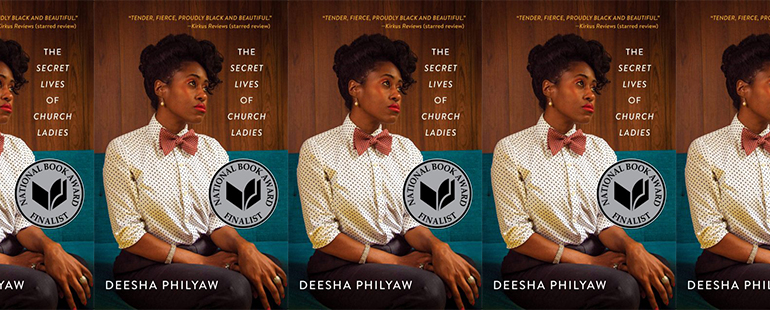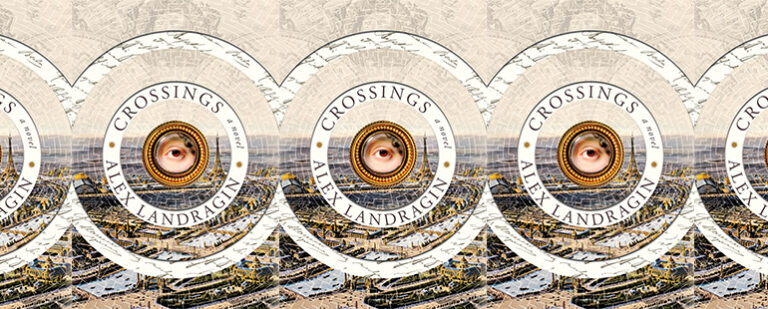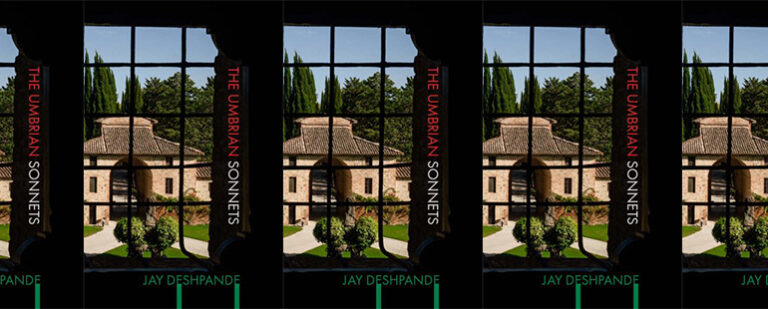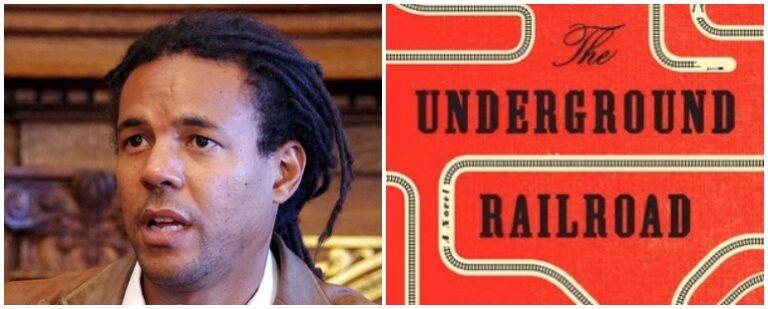“Ultimately, we Black women are singing from the same hymnal, whether we are talking about food, love, our mothers, or the church”: An Interview with Deesha Philyaw

In the multi-generational ensemble of women who narrate Deesha Philyaw’s debut story collection, The Secret Lives of Church Ladies (2020), teenage Jael most deftly poses the core existential question: “Can you suck dicks and still be saved?” Jael herself lives unruffled by this sex versus spirit dilemma born of a prohibitive church, as she freely conjures the naked body of the pastor’s wife during Sunday services. But other key characters struggle for decades to overcome the fear, guilt, and shame that, Philyaw says, “Christianity employs to control our desires and behaviors.” Often the constrictive religious messages echo from a long-internalized mother’s voice. In “How to Make Love to a Physicist,” Lyra, at age 42, begins privately to pleasure her own body for the first time, finally exhaling memories of a mother who’d forced her at church to wear a girdle and suck in her breath.
Philyaw skillfully blends inward reflection with outward mother-daughter battle, her narratives softened within the larger embrace of a nurturing, cross-generational women’s world that transcends particular times and places. Philyaw weaves nine stories into one collective fabric where the cast functions like a scattered chorus. Jael, Lyra, Arletha, Caroletta, Michelle, Olivia—these six first-person narrator protagonists never meet, and yet, the reader senses an intangible call and response flowing across the pages’ borders. When young Olivia in “Peach Cobbler” finally raises a fist to her religiously hypocritical mother, I can imagine Lyra in “How to Make Love to a Physicist” tightening her grip. She knows that 25 years before, the fist could well have been her own.
In creating such a protected womanist world where introspection, intimacy, combat, and eloquent smack-talk all thrive, The Secret Lives of Church Ladies links to Alice Walker’s The Color Purple (1982), Gloria Naylor’s The Women of Brewster Place (1982), Toni Cade Bambara’s The Salt Eaters (1980), and Toni Morrison’s Sula (1973), books whose authors have channeled the spirits of southern women’s community, wherever in America the writers grew up or later chose to settle. Philyaw’s sexually forthright stories of independent women also owe something to the more suburban narrative settings of Terry McMillan, but Philyaw is decidedly a deep southerner, raised in Jacksonville, a two-hour drive from where literary matriarch Zora Neale Hurston also grew up. The stories are set mostly in unnamed southern locales. In those that take place in northern locations, characters sometimes yearn for lost connection, often for those same mothers and grandmothers who had long chastised them. In “Snowfall,” set in Pittsburgh, the bitter cold expresses an emotional isolation that Arletha and her girlfriend Rhonda ritually overcome by cooking a southern dinner. Philyaw herself has lived in Pittsburgh since 1997 and told me that she similarly feels displaced there.
The balm for such isolation is storytelling, which, after the parent’s heavy-handed religious lecture is set aside, can reunite mothers and daughters. The Secret Lives of Church Ladies is a book of talk, alive on the tongue as much as the page, whose narrators, Philyaw says, “have a lack of self-consciousness about anyone hearing them that reflects the southern storytelling tradition.” Dialogue vibrates at the center, equally sobering and outrageous. It’s no surprise that Tessa Thompson has chosen to adapt the book into an HBO Max mini-series, which Philyaw will co-executive produce.
The dialogue particularly shines when women socialize apart from men. Although a few men achieve counterpart billing and are sympathetic characters, such as the love interest Eric in “How to Make Love to a Physicist” and the unnamed sexual partner in “Not-Daniel,” they are more often inaccessible figures that girls and women observe curiously from afar, like the young Olivia does in “Peach Cobbler,” referring to the almost larger than life pastor having an affair with her mother as God—though he is more scalawag than deity when he has audible sex with Olivia’s mother, then entitles himself to homemade fruit filling in the kitchen. Philyaw notes that she intends no conscious gender critique. She’s just writing the truth of her history, having grown up in a house of women where men were largely failing or absent. By rendering the abusive and neglectful men remote, Philyaw deepens the protected women’s space. More crucially, perhaps, these stories are also protected Black spaces, where neither racism, nor even a single white character intrudes—not because these women of Jacksonville, Pittsburgh, and other American settings do not face racism nor have interracial experiences, but because the author has chosen to fully center and celebrate their lives by cropping the white gaze from the racial frame.
In the last year, Philyaw has won the PEN/Faulkner Award and the One Story Prize and has been a National Book Award finalist. Such achievements attest to how The Secret Lives of Church Ladies has beautifully captured an intricate intimacy, when the communion far outlasts the sermon.
Erik Gleibermann: These are stories that feel for me like oral storytelling and part of a familiar southern tradition. Most use first-person narration, and in keeping with their being dialogue-driven, the narrators seem to be speaking out loud in their everyday voice, like we’re hanging out listening on a Pittsburgh or Jacksonville stoop. When you visualize these narrators, where are they? Who are they entertaining? As a California white guy, I welcome the hospitality of being invited to that stoop, but I know the specific audience is Black women in America.
Deesha Philyaw: The book’s title is about literal secrets, but mainly it’s about the conversations that we as Black women and girls have with ourselves or each other. The narrators have a lack of self-consciousness about anyone hearing them that reflects the southern storytelling tradition. The letter that Michelle is writing to Jackie in “Dear Sister” is very conversational. It’s just the two of them. And it’s like that for all of the stories. The narrator is talking only to herself and a close group of others. Olivia in “Peach Cobbler” is not talking to God, but she is talking about her understanding or misunderstanding of God. I’m thinking about Alice Walker in The Color Purple where she has Celie writing directly to God. There’s an intimacy that is inherent to the best storytelling. I didn’t do this consciously. It’s just the way the stories evolved. But now I’m conscious of it.
EG: The book has a broad choral quality. Women of different generations and from different regions seem to be intangibly speaking to each other across the storylines. How do you see the various stories interrelating into an ensemble?
DP: I wrote some of these stories when I didn’t know that I was building a collection.
But if you get any group of Black women together, we’re finishing each other’s sentences. That’s across social media or at a conference, across regions, generations, and cultures. There’s Black American folks, Black Caribbeans, northern Black women who have southern grandmas. Ultimately, we Black women are singing from the same hymnal, whether we are talking about food, love, our mothers, or the church. Our experiences may not be identical but there is a resonance. Women of a certain age, our mothers and grandmothers, don’t want to talk about certain things. Contrast that with women of a younger generation who do and ask these questions with the women who have passed down culture and religion to us. These are some of the hardest conversations to have. So, to have the stories be in conversation with each other accomplishes something some of us can’t do in real life with our own mothers or women of a different generation. One of the goals I have for the book is to spark healing conversations that people need to have in the church and between mothers and daughters.
EG: I love the book’s seductive title that captures what seems to be the central dilemma for various characters, the conflict between a restrictive Christian propriety and sexual desire. I want to quote Caroletta here. In the first story, “Eula,” she says the problem is “those women at church who think they have to choose between pleasing God and something so basic, so human as being held and known in the most intimate way.” And in her own story, young Jael cuts to the issue with a bit more salt. As you put these stories together over time, how did you arrive at this thematic focus?
DP: I wrote “Eula” without realizing I was writing a collection. It was the first one. It gave me a blueprint. It’s probably the story with the most theology in it. What does the Bible say and what does the church teach? It gave me the freedom later not to be as explicit about the theology I am challenging because “Eula” does the work. Caroletta is speaking for me in terms of the hypocrisy, the double standards, the way the church is anti-woman. The story felt heavy to me, but necessary for the collection.
EG: The way I read the story, having a queer sexuality can ironically free a woman erotically because she is expressing herself outside the framework of the church’s restrictive sexual values. Eula is such a confined person within the hetero framework that she has to stay a virgin until she finds that mythical man to marry and wouldn’t even conceive of herself as queer or use such a word. Yet she’s having great fun going down on Carlotta. And teenage Jael, who’s lusting after the pastor’s wife, has a similar freedom.
DP: I have an event with a Baptist church coming up and I am prepared to have a theological discussion about that question. Can we talk about how the church has told us we can’t do these things that are so basic, with such a human urge, and is condemning people for wanting to? When you tell women that they have to spend all their time with other women instead of men or else they are going to fall into sin, who are they going to be intimate with? That’s the genesis of “Eula” for me, two women who are trying to follow these very restrictive and inhumane rules and expectations. It’s natural that they would turn to each other. Someone asked me once if the queer stories in the collection was my effort at representation. I said representation is like tokenism. I felt like the collection wouldn’t be complete if I didn’t say what women are doing, how they are surviving. And there are lots of ways. Sometimes it’s by keeping secrets and sometimes those involve sexual intimacy between women and sexual longings for other women. That felt organic for the collection.
EG: This tension between sexuality and religion often overlaps with the mother-daughter conflict. But there are various types of conflict between daughters and disapproving mothers. Sometimes the daughter has already moved away. In “Snowfall,” Arletha has moved away, and yet her mother is still imposing on her. She still struggles internally with her mother’s judgments. How are daughters carrying those judgments?
DP: I was intentional about the theme of Black sexuality and the Black church, but when I turned the manuscript in, only then did I say to myself, There’s a lot of mother-daughter stuff here. It’s very personal. My mother died in 2005 and it was one of the most defining and difficult relationships of my life. While we made peace when she was dying, the stories show me that we had unfinished business. It showed up in the stories. Also, mothers pass down culture in ways that fathers don’t, at least for Black women, and that includes religion and how you’re supposed to be a woman in the world. For some of us, our life’s work includes unlearning and unpacking that. What they’re being taught at church is reinforcing what they’re being taught at home and the reverse.
EG: I don’t think any of the younger women except Eula and Renee in “Dear Sister” even identify with the church. They’re all trying to escape it.
DP: They don’t identify and yet look at the influence the church continues to have. Many of us can attest to the fact that you don’t leave the church behind just because you leave the building. I’ve had women tell me that the teachings, the pastor, and their mother are in the bed with them. It impacts their sex lives.
EG: Your dialogue is just brilliant, so chiseled to precision. I especially loved “Dear Sister.” It’s in epistolary form, but it’s like eavesdropping on a family cast of high-style trash talkers. Can you talk about your process and aims in crafting dialogue?
DP: My characters make it easy because they are women who don’t mince words. There were Black women from my childhood who had a rhythm. Even when we are stuck in horrible situations, we are the queens of the pithy phrase that gets to the heart of things. Like “I’ll make a way out of no way”—words that can change your life, that can set a tone that tells you exactly what’s going on. So, I have to credit the Black women I’ve always known. Before I was a Black woman I was listening to Black women. So, when I immersed myself in the scenes, I could hear my grandmother with the filter of all the church mothers I’ve ever heard and how they’d talk about girls they considered wayward. So, it was a chorus and yet a common judgmental thread of religion as a weapon, but phrased in the most beautiful language, loving and concerned, but still ultimately a harsh critique. It’s a reality of people who love you, but say things that can cut you to the quick.
EG: You’ve mentioned the craft question of how much exposition and narrative backstory to give. I wanted to know if you have conscious strategies about how to balance exposition and reflection with dialogue. I mean the approach of giving us the voices directly versus reflecting as a thinking woman on what is being said.
DP: I have that thought about the quote you read from “Eula.” Are these things that Caroletta would actually say to Eula or is it something she would be thinking? There’s so much she doesn’t say and so much she hasn’t said for so long. The moment in that particular year of the story she finally says the things that she’d been withholding for fear that Eula would sever their sexual relationship if Caroletta upset her. It was essential to have her say those things. There’s a similar tension in how “How to Make Love to a Physicist.” They’re having a conversation about science and religion, but it’s really two conversations. Lyra is asking questions and he’s answering. But she’s having a whole conversation with herself. She asks, What about heaven? but what she really wants to ask is, What about hell? The exposition can serve as a counterpoint to dialogue. The question is, does this dialogue ring true or can you tell I’m just trying to convey information? I’m trying to avoid exposition because I can be heavy-handed with it. So, I might try to put things into dialogue and sometimes I need a reader to tell me if it’s working or not. That’s part of my revision process.
EG: There are so many great opening lines in the collection. I think of “Snowfall,” which starts: “Black women aren’t meant to shovel snow.” I know you’re not that deep into symbolism, but I took it symbolically to mean something about displacement, that Black women aren’t meant to be isolated away from their southern communities. In the romantic couple Rhonda and Arletha, both have been cut off from their mothers. They have to become family for each other, recreating southern nurturing by cooking crab legs with Louisiana hot sauce. Can you talk about this theme of displacement and loss? And this is your story to a degree also, having grown up in Florida and now living in Pittsburgh where “Snowfall” takes place. How much is your own experience reflected in your characters?
DP: I feel displaced here in Pittsburgh as a Black woman from the south. As a Black woman, I have been successful in spite of Pittsburgh, not because of it. The weekend I began the story, there were record freezing temperatures in the city, so I was feeling that cold. The cold and the ice are symbolic. But thematically, for the story to work in the collection, they must be women living their lives in opposition to the church’s teachings. The opening I reworked a number of times, but that first line set the tone.
EG: It seems like you’ve tapped powerfully into a deep cultural and political current for African American women today. How do you see these stories as speaking to the current moment for them? Just as a comparison, if you take Terry McMillan, you could ask what did her work mean in the ’90s for Black women. Here we are 20 to 30 years later. Are there particular issues, like around sexuality and religion, that perhaps your book speaks to for Black women in a distinctive way?
DP: She kicked open a door and so many of us came in behind her. In terms of this particular moment, I don’t know, because the book is so inter-generational. But our generations aren’t connected. When I was growing up it wasn’t unusual to have three or four generations living in a household together. But now it’s incredibly rare. Maybe my book being inter-generational was what we needed at this particular time because it gives us some of that connection back and fosters the conversations that build those bridges. And the book came out during a pandemic when so many of us were feeling isolated. I had Black women tell me they felt less lonely having these stories.
EG: The book is a kind of protected space. It’s a safe world for women insulated from racism. There’s some emotional brutality, but there’s no racist brutality. It’s also unapologetically woman. That leads me to ask: who, beyond Terry McMillan, are your literary influences? You already mentioned Alice Walker. Gloria Naylor would be obvious to me in the way you shape a collective women’s world. And I know you grew up about 140 miles from where Zora Neale Hurston did. But I don’t want to imply you’re working only in a Black women’s literary lineage.
DP: I welcome those names! I would add Toni Cade Bambara and also J. California Cooper as a short story writer, particularly the intimacy of her stories. That’s what I aspire to. I also think about Toni Morrison’s Sula—characters who are, as you used the phrase, unapologetically woman. And August Wilson for an unapologetic Blackness. Both Wilson and Morrison were questioned by white people as limiting themselves by writing exclusively about Black life and both chafed at that suggestion, as if Black life is not incredibly full, or as August Wilson said, didn’t contain the entirety of the human experience. I don’t have to consider a white gaze and certainly not translating for a white audience. There are going to be connection points for people who are not Black women if they want them.
EG: When you talk about not writing for the white gaze, I think about the fact that you are also not writing for the male gaze. A lot of the men in these stories don’t really cut it. They’re often relegated to the wings and also tend to be irresponsible, absent, or flat-out rogues. How did you go about drawing men in this woman-centered world?
DP: I grew up in a house of women, so when I revisit these places scenically and nostalgically, it’s always women. Men’s absence, failings, and shortcomings were felt. At the same time there was a deep longing for men. If you had a good man, it was like you’d won the lottery. In “Dear Sister,” the father is dead. He’s the one who connects them biologically, but the connections they forge among themselves transcend him. So, the kind of father he was almost becomes irrelevant. The story isn’t about how he failed them, but how they reclaimed their relationships and themselves. These are women who are for the most part thriving. They do have an uncle who was probably a bit of a scoundrel himself, but we see him in a very tender place. The men showed up in these stories in the way they showed up in my experience.
EG: On the other hand, we have the impressively attentive Eric character in “How to Make Love to a Physicist.” I was personally heartened and relieved after the string of losers. He has stellar integrity and awareness, even when the narrator Lyra ghosts him the second time. She later asks why he accepted her fleeing and he just says, “I figured you had your reasons.” It’s a beautiful line because it’s so compassionate. I was also happy to see her overcome the religious and body image self-reproach and affirm her sexuality. So, I’d like to hear about what’s behind this particularly celebratory story?
DP: I met a real-life physicist, developed a crush, and immediately wrote the first couple of lines. I didn’t come back to it for months. I gave myself an order. How are they going to get there? What are the complications going to be? So, when I was getting to the second ghosting, I asked myself, are they going to have a happy ending. Is it too remedial? Is it too sentimental to have one? And then I started chastising myself for believing that from a craft perspective a happy ending is somehow lesser. I finally said, No, fuck it. They’re going to be happy. This feels right. People ask me, How do you know when a story is at its end? And I say it’s a sigh. But a sigh can be relief, resignation, or frustration. And for them, the sigh is “Finally!”
EG: I know you are currently exploring whether you want your next book to be a novel or another story collection. How is that process going and what draws you to one versus the other?
DP: Something about finishing the collection in 2019 helped me better understand the novel I’ve been struggling to write since 2007. I’ve made some major revisions, reworked some characters, and was thinking it’s going to be satirical. But I’ve written a bunch of essays and two short stories. And the novel is always the thing I say I am going to get to. Finally, a week ago I made a commitment. My next book is going to be a collection of short stories about mothers and daughters. But my new story “Dr. Sandman,” now in The Oxford American, which is the second story I’ve written since the pandemic, is about a sleep psychologist who suffers from insomnia and realizes he can enter children’s dreams. It’s my first attempt at writing something other than realistic fiction. There are some magical elements. And it’s also my first attempt at writing a male protagonist in third person. Writing in a pandemic means unpredictable things for unpredictable times.
This piece was originally published on September 9, 2021.


